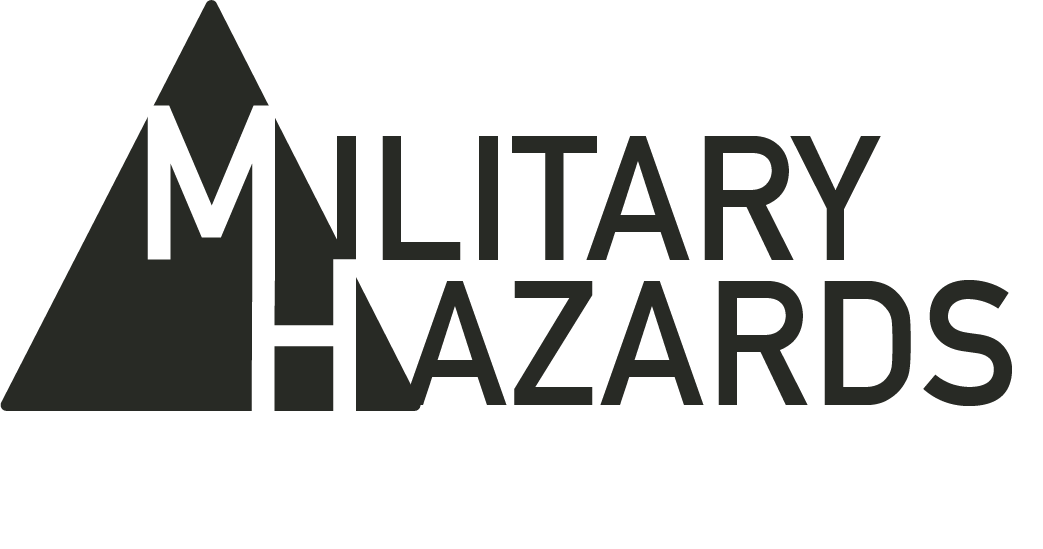Contact Our Legal Partner
"*" indicates required fields

The Navy plays a vital role in safeguarding our nation’s interests at home and abroad. However, shouldering this amount of responsibility also requires an awareness of potential occupational hazards and methods of mitigating those hazards. One such concern that has gained significant public attention and scrutiny is the Red Hill Fuel Leak – a critical environmental issue that has raised questions about the Navy’s commitment to protecting both its personnel and local communities. In this post, we explore exactly what the Red Hill Fuel Leak is, its impact on the environment and public health, and the steps being taken to address the concerns that have arisen because of it.
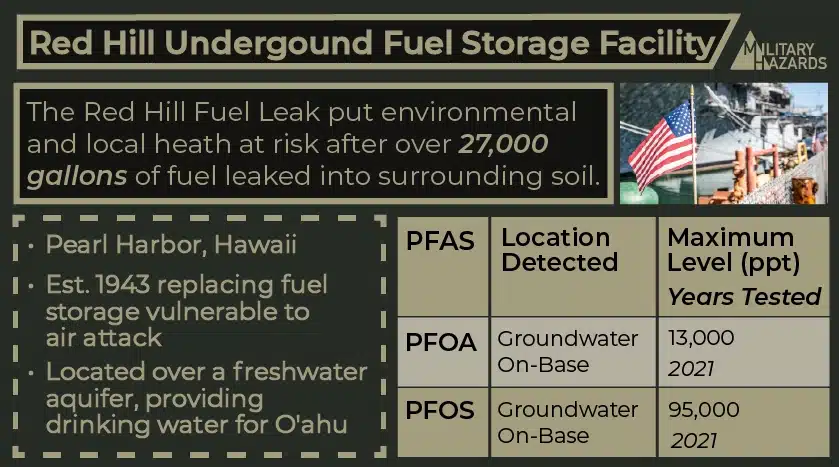
What is the Red Hill Fuel Leak:
- The Red Hill Underground Fuel Storage Facility, located near Pearl Harbor, Hawaii, is a vital fuel reserve for the Navy. Over the years, though, this facility has experienced leaks that resulted in the contamination of the surrounding groundwater. The magnitude of this problem became evident upon the discovery that over 27,000 gallons of fuel had leaked into the soil surrounding the facility, impacting both human health and the ecosystem.
Concerns:
- The Red Hill Fuel Leak poses a significant environmental and public health risk. The contamination of groundwater can potentially affect drinking water supplies, and threaten the health and well-being of both military personnel and the local communities. Additionally, the impact of this leak on the surrounding ecosystem, including marine life and other sensitive habitats, raises broader ecological concerns. Understanding the extent of these hazards is critical when implementing effective remediation strategies and preventing further damage.
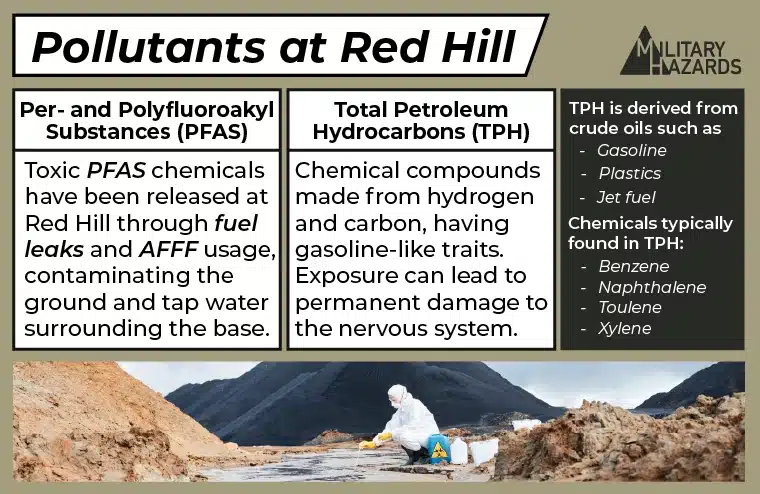
Response:
- The Red Hill Fuel Leak has caught the attention of governmental agencies like the military, and many concerned stakeholders. In recognizing the severity of the issue, the Navy has been collaborating with state and federal agencies, as well as local community groups, to address the contamination. Various investigations, monitoring programs, and remediation efforts have been initiated to assess the extent of the damage and implement corrective actions. The goal is to restore the affected areas, protect public health, and prevent future incidents.
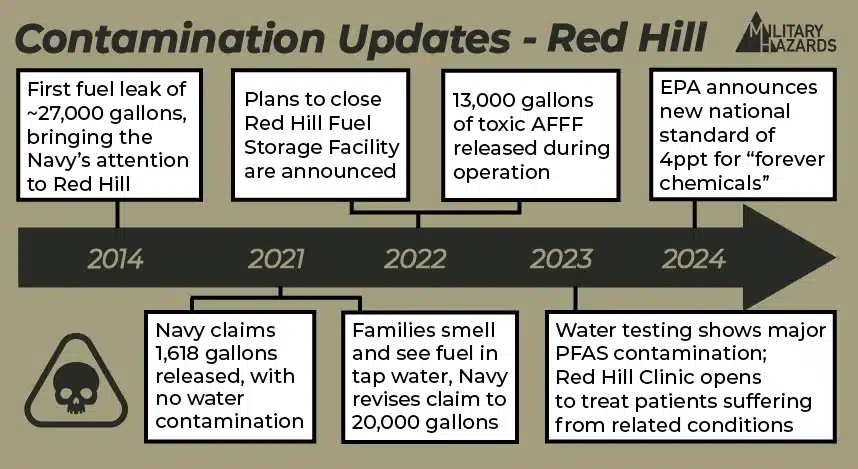
Lessons Learned:
- The Red Hill Fuel Leak serves as a reminder of the need for strict safety protocols, regular maintenance, and consistent monitoring of military facilities. Lessons from this incident can help improve the future design of infrastructure, operational practices, and emergency response plans that can minimize the risk of similar environmental hazards. Transparency, accountability, and collaboration between the military, regulatory agencies, and local communities is essential to ensure a safer environment.
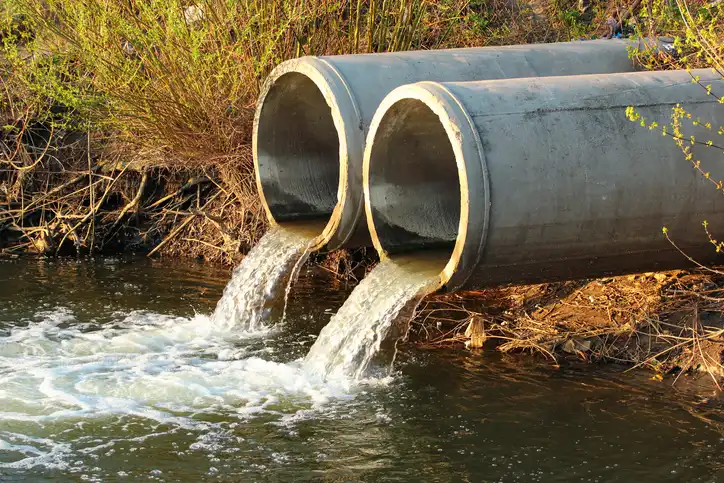
The Red Hill Fuel Leak has highlighted the extreme importance of addressing environmental hazards faced by our military members. The Navy’s commitment to remediation efforts and collaboration with outside stakeholders is crucial to mitigate the impact of this incident. By learning from this experience, implementing preventive measures, and prioritizing environmental care and concern, the Navy can uphold its enormous responsibility while also protecting the health and safety of its military personnel and the communities it serves.
